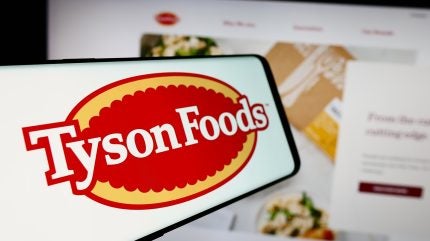
Tyson Foods is closing its beef-processing plant in Lexington, Nebraska, under a plan to “right size” the struggling segment of the US giant’s meat business.
After reporting a year of declining beef volumes earlier in November and pointing to an adjusted operating loss for the segment in fiscal 2026, the meatpacker said it will also convert its beef facility in Amarillo, Texas, to a single, “full-capacity” shift.

Discover B2B Marketing That Performs
Combine business intelligence and editorial excellence to reach engaged professionals across 36 leading media platforms.
Tyson Foods added the moves are intended to position the company’s beef operations for “long-term” success.
The Jimmy Dean and Hillshire Farm brands owner said it will increase output at other unidentified beef plants to meet customer demand. At the same time, the company assured it remains “committed” to helping the affected workers apply to positions at other facilities and offering relocation benefits.
The decision follows a tough fourth quarter in fiscal 2025, when “tight” cattle supplies drove Tyson Foods’ beef segment deeper into the red.
Beef registered an adjusted operating loss of $94m for the quarter, compared to a $71m loss posted a year earlier.

US Tariffs are shifting - will you react or anticipate?
Don’t let policy changes catch you off guard. Stay proactive with real-time data and expert analysis.
By GlobalDataSales for beef rose to $5.49bn from $5.26bn, driven by a 17% increase in average prices but with an 8.4% decline in volumes.
For the full fiscal year 2025, the beef segment’s adjusted operating loss widened to $426m from a $291m loss and sales increased to $21.6bn from $20.5bn.
While the dollar value of beef sales increased due to higher prices, the volume of beef sold fell by 1.9% for the full year.
“The beef segment remains our only soft spot,” president and CEO Donnie King said in his results chat with analysts, adding chicken sales are expected to take up the slack in fiscal 2026 for Tyson’s two biggest revenue earners.
Tyson projected an adjusted operating loss in the beef segment of $400m to $600m for fiscal 2026. Meanwhile, the US Department of Agriculture forecasts domestic beef production will fall another 2% that year.
“Cattle supplies are at record lows due to drought, potential herd rebuilding, and the impact of new world screwworm in Mexico. These factors created market headwinds during the quarter,” King said.
In the new year, King and newly installed COO Devin Cole said the challenges revolve around the prospect that tight supply will be hampered by heifer retention, or holding female carves back to join the milk or breeding herd rather than releasing them for slaughter.
“Looking forward, we expect cattle supplies to remain tight as we move into 2026. During this period, chicken is likely to benefit most from changing consumer preferences, both at retail and in foodservice,” King said.
He added that “more heifer retention implies less beef in the near term”, which “means supply of market-ready cattle will fall before it increases in future years”.





